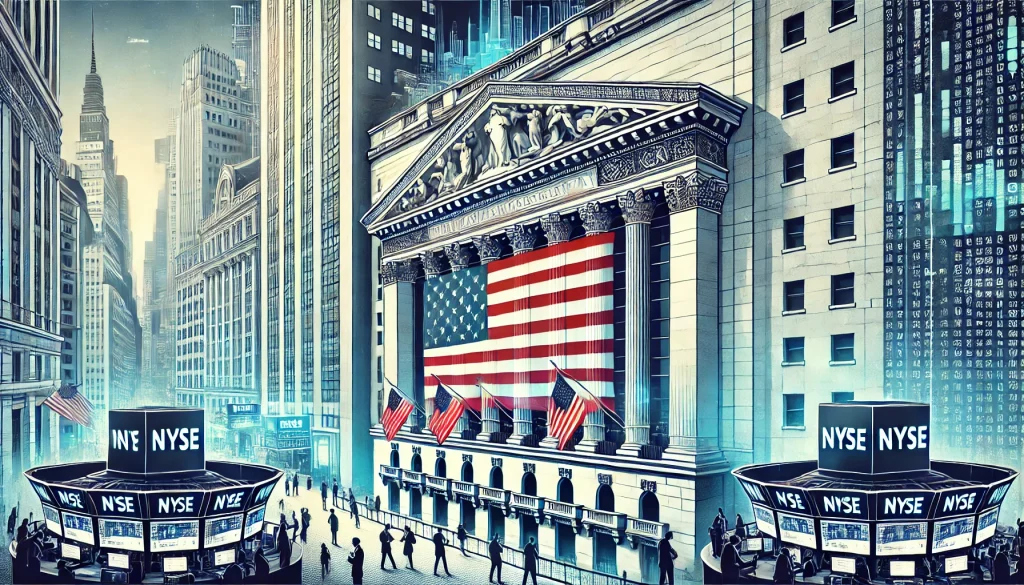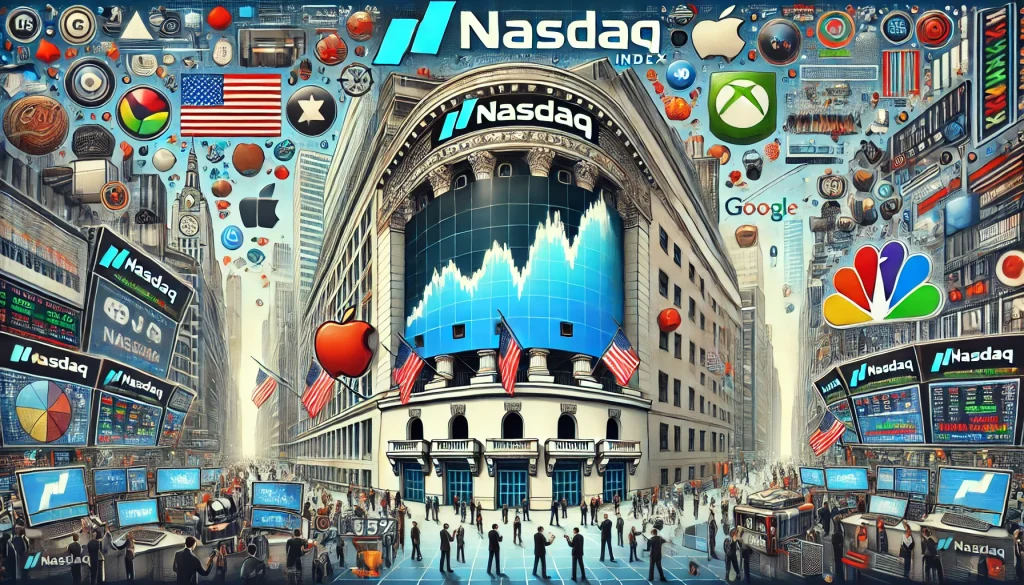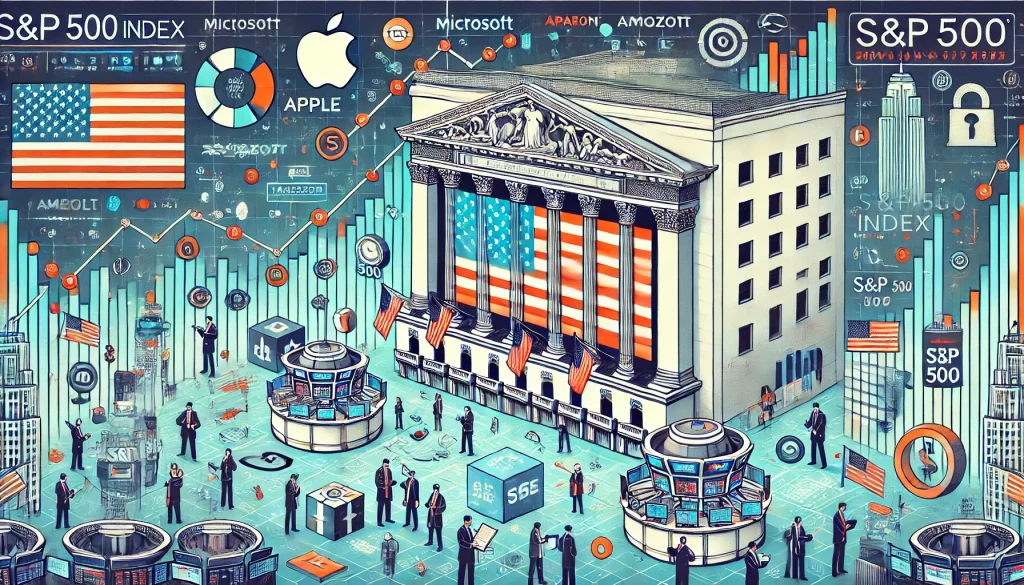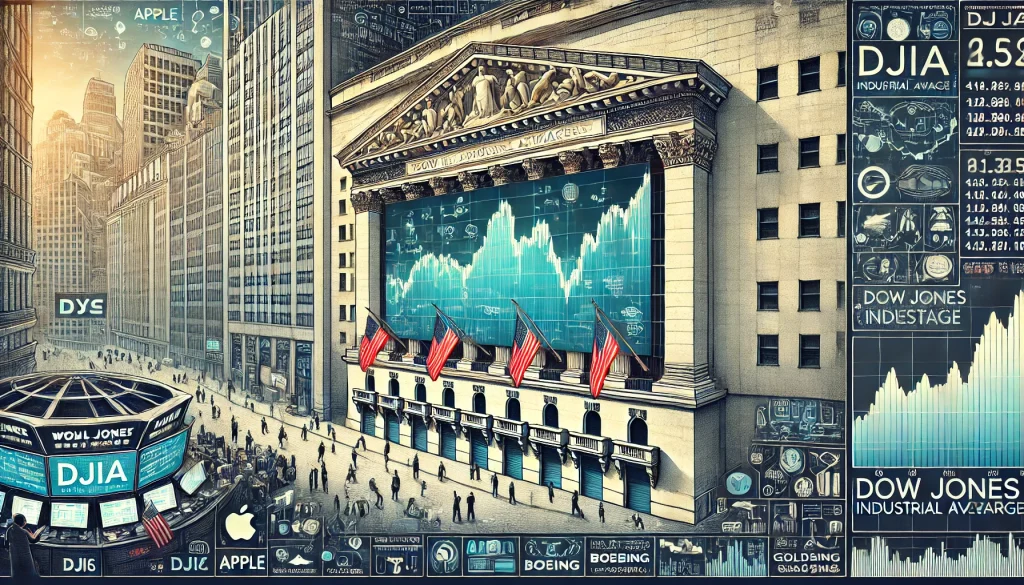
U.S. stocks are shares of companies that are listed on a U.S. stock exchange. These stocks include not only companies that operate within the United States, but also stocks of multinational companies that operate globally. The U.S. stock market trades on two main exchanges:
New York Stock Exchange (NYSE): One of the largest and oldest stock exchanges in the world. The NYSE lists many large companies and is renowned for its high trading volume and liquidity.
NASDAQ: An exchange that primarily lists technology stocks, with major technology companies such as Apple, Microsoft, Amazon, and Google listed. It is characterized by its use of electronic trading systems.
Key characteristics of U.S. stocks include
Diversity: The U.S. stock market lists companies from a wide range of industries, allowing investors to build a diverse portfolio.
Liquidity: Because it’s a large market, it’s relatively easy to buy and sell stocks.
Regulation and transparency: The U.S. Securities and Exchange Commission (SEC) maintains strict regulation and transparency to protect investors.
Growth: The U.S. is a center of the global economy and home to many innovative and high-growth companies.
There are many ways to invest in U.S. stocks, including buying shares directly and utilizing a variety of financial instruments such as exchange-traded funds (ETFs), mutual funds, and options. These allow investors to benefit from the growth of the US economy.
New York Stock Exchange (NYSE)

Founded on May 17, 1792, the New York Stock Exchange (NYSE) is the world’s largest stock exchange. In 1978, authorities designated the main buildings of the NYSE, located at 11 Wall Street and 18 Broad Street in New York City, as historic landmarks. The NYSE began as the United States’ first formal stock exchange when 24 stockbrokers signed the Buttonwood Agreement.
The NYSE operates both a physical and electronic exchange. Brokers once shouted out buy and sell prices in the exchange’s iconic open shout system, but most trading now occurs electronically. To facilitate trading, it uses designated market makers to ensure liquidity and fair prices.
The NYSE is open for trading from 9:30 a.m. to 4:00 p.m. Eastern Time, Monday through Friday, and begins and ends with the ringing of the opening and closing bells. Executives or prominent figures from listed companies often ring the opening and closing bells, a tradition that began in the late 1800s with gongs and evolved to brass bells in 1903.
The NYSE has undergone several significant changes throughout its history. It became a non-profit corporation in 1971 and a publicly traded company in 2006. In 2007, it merged with Euronext to form NYSE Euronext, and in 2013, Intercontinental Exchange (ICE) acquired it for $8.2 billion. These mergers expanded its global reach and trading capabilities.
The NYSE lists many of the world’s largest companies and is an important part of the S&P 500 and Dow Jones Industrial Average. It provides a platform for millions of securities trades every day and remains an important institution in global finance.
Nasdaq

NASDAQ, the world’s first electronic trading system, officially opened its doors on February 8, 1971. It replaced the inefficient specialized systems of traditional exchanges and became an online global marketplace for buying and selling stocks.
Features of Nasdaq
- Electronic trading systems: Nasdaq uses computerized trading systems to process stock purchases and sales. It automatically matches buyers’ and sellers’ orders through a matching engine and provides real-time price movement data.
- Trading markets: Nasdaq supports trading in a wide variety of financial instruments, including stocks, derivatives, fixed income securities, commodities, and more. It operates 29 markets across the United States and Europe.
- Major company listings: Nasdaq lists some of the world’s leading technology companies, including Apple, Microsoft, Google, Meta, Amazon, and Tesla. The technology-focused Nasdaq Composite Index reflects this concentration of tech giants.
History of Nasdaq
- Founding and growth: Nasdaq initially began as a subsidiary of the NASD, and in 2006 it officially separated from the NASD and began operating as an independent national securities exchange. In 2008, it merged with the Scandinavian exchange group OMX to form the Nasdaq OMX Group, which changed its name to Nasdaq Inc. in 2015.
- Atechnology-focused index: The Nasdaq Composite Index includes more than 3,000 stocks listed on Nasdaq and reflects the performance of major technology companies. The index has become an important barometer for the growth of the tech sector.
- Innovation and regulation: Nasdaq continues to innovate, and in 2020 proposed a new rule requiring public companies to disclose the diversity of their board composition, which would encourage companies to include at least one female director and a minority or LGBTQ+ member on their boards.
Nasdaq’s role
Nasdaq primarily covers technology-focused stocks, providing real-time trading data to investors around the world and supporting a variety of financial services. Nasdaq also operates through a variety of revenue streams, including listing fees, investor relations services, and market technology.
3 major U.S. stocks indices
Nasdaq Indices

NASDAQ Composite Index
The Nasdaq Composite Index is a market-weighted index that includes all stocks listed on the Nasdaq stock market. The index has been around since Nasdaq was founded in 1971, and currently tracks more than 3,000 stocks. It includes stocks from major tech companies Apple, Microsoft, Google, Meta, Amazon, and Tesla, and their performance has a significant impact on the index.
Although the Nasdaq Composite Index includes a wide range of industries without bias toward any particular sector, the technology sector still accounts for about 50% of the total index. This is one of the main reasons why the Nasdaq has become known as a tech-centric exchange. The index primarily assesses the overall health of the market and helps investors keep track of what’s going on in the market.
NASDAQ-100 Index (NASDAQ-100 Index)
The Nasdaq 100 Index comprises the stocks of the top 100 non-financial companies listed on the Nasdaq market. Introduced in 1985, the index reflects the performance of companies across various industries, including technology, telecommunications, life sciences, and retail. The Nasdaq 100 Index offers a more concentrated portfolio than the Nasdaq Composite Index. This is popular among investors pursuing a technology stock-focused investment strategy.
The Nasdaq 100 Index, calculated on a market capitalization-weighted basis. This is the large technology companies such as Apple, Microsoft, Amazon, Tesla, and Nvidia. Investors often use this index as an important indicator of technological innovation, reflecting its significance in the tech sector.
The importance of the Nasdaq index
The Nasdaq index serves as an important global barometer, particularly for reflecting the performance of the technology sector. Investors can utilize the Nasdaq Composite Index and the Nasdaq 100 Index in various investment, depending on their specific characteristics.
- Market health assessment: Investors use the Nasdaq Composite Index to assess the overall health of the entire market.
- Investing in technology stocks: The Nasdaq 100 Index supports a technology-focused investment and offers a concentrated portfolio of technology stocks.
- Investment portfolio management: Investors can utilize these indices to evaluate and adjust their investment portfolios.
S&P500

Standard & Poor’s (S&P) Global manages the S&P 500 Index, one of the most widely recognized stock indices that track the performance of the U.S. stock market. This index includes 500 of the largest publicly traded companies in the United States. It primarily includes companies listed on the New York Stock Exchange (NYSE), Nasdaq, and the Chicago Board Options Exchange (CBOE).
How the S&P 500 is composed and calculated
To calculate the S&P 500 Index, analysts multiply each company’s stock price by its number of outstanding shares to determine its market value, and then sum these values to produce the total index value. The only shares included in the calculation are those that are available for trading to the general public.
To be eligible for inclusion in the S&P 500, a company must meet the following criteria
- Have a market capitalization of at least $8.2 billion
- U.S.-based companies
- Legal form offering common stock
- Strong performance in recent quarters and over the past four quarters
- The percentage of shares outstanding is above a certain threshold
The importance of the S&P 500
The S&P 500 index serves as an important indicator of the overall health of the U.S. stocks economy and stock market. The index includes large companies across a wide range of industry sectors, making it less dependent on any one industry and more reflective of the performance of the market as a whole. It is also one of the most favored indices among institutional investors, and is widely used as a proxy for the US stock market.
Comparison: S&P 500 vs. other indices
- The Dow Jones Industrial Average (DJIA): The Dow Jones includes 30 major large-cap stocks, while the S&P 500 includes 500 large-cap stocks to reflect the broader market. The Dow Jones is calculated on a price-weighted basis, while the S&P 500 is market capitalization-weighted
- Nasdaq index: The Nasdaq is a technology-focused index, and some stocks in the S&P 500 are also included in the Nasdaq index. However, the Nasdaq primarily consists of technology stocks and high-growth companies, while the S&P 500 encompasses a broader range of industries.
How to invest
You can’t invest directly in the S&P 500 index, but you can invest through an exchange traded fund (ETF) or index fund that tracks the index. Examples include the SPDR S&P 500 ETF (ticker: SPY) and the Vanguard 500 Index Fund (ticker: VOO). These funds target performance similar to the S&P 500 index, and provide investors with returns that reflect the performance of the index as a whole.
Dow

The Dow Jones Industrial Average (DJIA), commonly referred to as the “Dow,” is one of the most widely recognized stock indices in the United States. First calculated by Charles Dow in 1896, it began as an index that included 12 industrial companies and now includes 30 major large-cap stocks. The Dow includes representative companies from a variety of industries listed on the New York Stock Exchange (NYSE) and NASDAQ.
How the Dow is constructed and calculated
The Dow is calculated as a stock price-weighted index, as opposed to a market capitalization-weighted index. This is done by dividing the sum of the stock prices of each constituent company by the Dow denominator to calculate the index. The Dow denominator can change due to things like stock splits and dividends, which minimizes the impact of corporate actions like stock splits on the index.
Constituent enterprises
The Dow is made up of 30 large-cap stocks that represent various sectors of the U.S. stocks economy. It includes major companies such as Apple, Microsoft, Amazon, Boeing, Goldman Sachs, and Coca-Cola. These companies represent various industry sectors, including technology, finance, healthcare, and consumer goods. Analysts regularly reevaluate the index to adjust to the changing economic environment.
Historical significance and fluctuations
The Dow has reflected significant events in the U.S. economy. The Great Depression of the 1930s, Black Monday in 1987, 9/11 in 2001, the financial crisis of 2008, and many other historical events have caused the index to fluctuate significantly. These fluctuations show that the index is an important indicator of the overall health of the U.S. economy.
Comparing the Dow to other indices
Analysts calculate the Dow on a stock price-weighted basis, giving companies with higher stock prices a greater impact on the index. In contrast, they calculate the S&P 500 on a market capitalization-weighted basis, where a company’s overall market value has a more significant influence. This is one of the reasons why the Dow receives some criticism compared to the S&P 500, but the Dow still plays an important role as a leading indicator of the U.S. stocks economy.
Source
- Understanding and Playing the Dow Jones Industrial Average
- Dow Jones Industrial Average
- What Is the S&P 500?
- The S&P 500: The Index You Need to Know
- How the NASDAQ Stock Exchange Works
- What is the Nasdaq Composite, and What Companies are in It?
- What Is the New York Stock Exchange, and How Does It Work?
- New York Stock Exchange (NYSE)
- New York Stock Exchange (NYSE): Definition, How It Works, History
